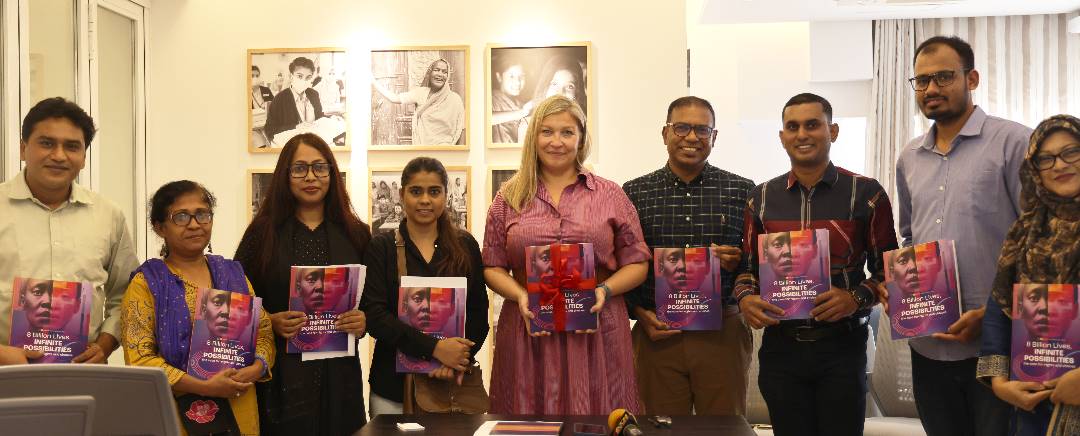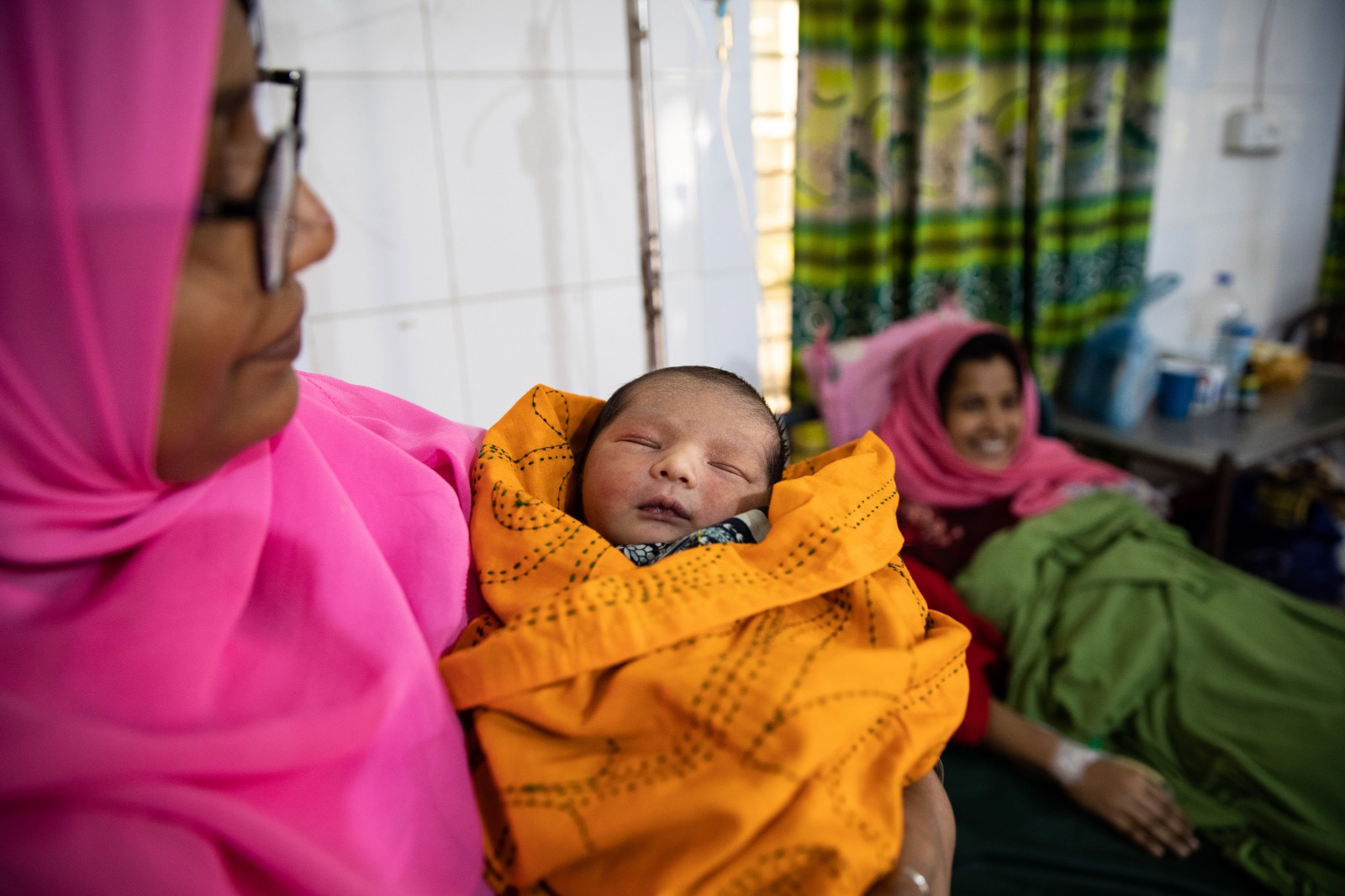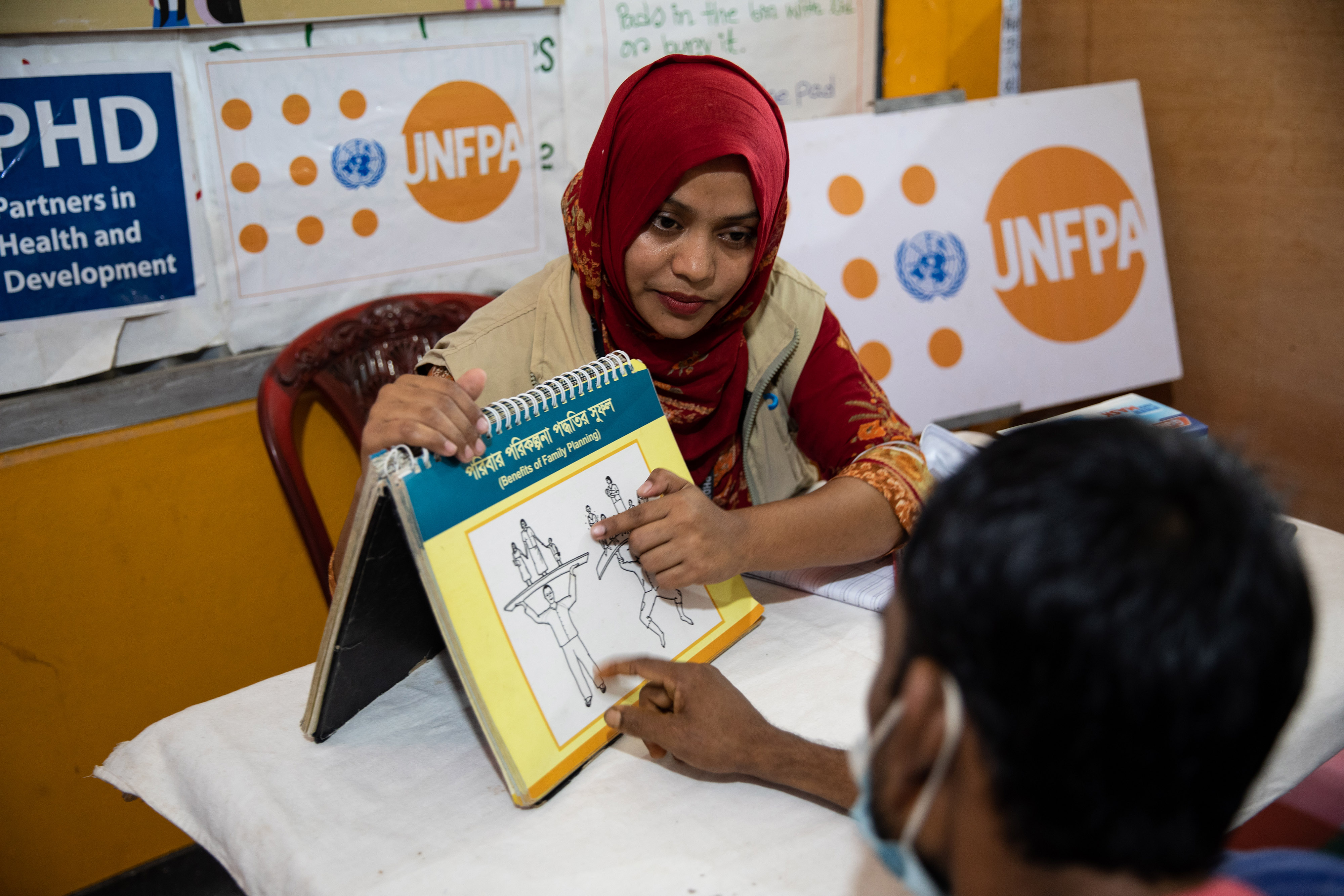On April 30, UNFPA Bangladesh presented its annual flagship publication, the State of the World Population Report (SWP) 2023, to the local media.
Each year, UNFPA publishes the SWP, analyzing major developments and key trends in the world population and demographics. Population trends are real and enormously impactful and affect culture, social relations, economies, and political discourse. They influence how we approach climate change, allocate resources, respond to shifting workforces, and more. The State of World Population Report 2023 is titled "The 8 Billion Question: Too Many or Too Few?" and examines the world's current population, which reached 8 billion in November 2022.
This milestone shows that people are living longer, healthier lives and enjoying more rights. More women survive pregnancy, and more newborns survive the first months of life. Children are more likely to grow into adulthood and beyond.

This milestone has been met with considerable anxiety, and the most commonly held view is that the world population is too large, a sign that population anxiety is real and widespread. Amid these concerns, it is all too easy to interpret the biggest demographic headlines of the moment—8 billion people on Earth alongside historically low fertility rates in many countries—as signs of impending disaster.
The report examines the basic right of every individual to freely decide the number, spacing, and timing of their children, along with our imperative to make sexual and reproductive health decisions free from discrimination, coercion, and violence. Reproductive health services should include contraception, comprehensive sexuality education, safe abortion where legal, post-abortion care everywhere, and infertility care. These are the goals we must work towards, not the goal of influencing fertility rates, whether high or low.
Examining the situation in Bangladesh, the total population reached 169.8 million in 2022, according to the latest Census. The SWP reports that the country’s population is 173 million, a projection-based number for 2023.
According to the Census, there are more females (50.43%) than males (49.51%) in the population of Bangladesh, which has implications for society and the economy, including reaping the gender dividend.
The population's age structure shows a favorable demographic transition, with 26% of the population aged 0-14, 68% aged 15-64, and 6% aged 65+.

In 2023, life expectancy at birth will be 72 for men and 76 for women. Maternal mortality and child marriage rates are declining, and the contraceptive prevalence rate is rising. Despite this marked success, much more is needed to achieve the three zeros and the SDGs.
The maternal mortality rate is reported at 123 (death per 100,000 live births), which needs to be explained with caution as it is based on a new estimate done by UNFPA, WHO, WB, and UNICEF (168, SVRS, BBS 2021).
Furthermore, 51% of girls are married before they turn 18 (50% before the age of 18 and 27% before 15, BDHS 2022), which indicates that Bangladesh continues to have the highest rate of child marriage in Asia. This results in a very high rate of adolescent pregnancy. The adolescent birth rate per 1,000 girls aged 15-19 is 74. Almost one in every four married adolescents has already started childbearing (BDHS 2022).
The contraceptive prevalence rate is 64% (64%, BDHS 2022), and the unmet need for FP is 12% for married couples or those in a union (10% BDHS 2022).
The report indicates that 23% of women are subject to intimate partner violence, and two-thirds of women lack decision-making on SRHR. (SGD 5.6.1)
There is marked heterogeneity in terms of women’s fertility preferences. While some women in Bangladesh preferred not to have children because they could not ensure their survival, others wanted to increase their family size by at least one son, which was seen as helping the family’s security.

To address demographic challenges, it is time for a new approach, a new vision of the population that puts people at its center. It is time to turn away from population targets and towards demographic resilience —an ability to adapt to fluctuations in population growth and fertility rate, which have taken place throughout history and will continue to take place. This means investing in data collection that looks beyond population sums and fertility rates. It means asking the right questions, such as whether people are able to meet their fertility goals.
Societies can become more resilient with policies that support sustainable development and human rights by empowering individuals to realize their reproductive ideals and broader well-being. Because, in the end, how we see the world’s population is, quite literally, how we see ourselves. Who are we? Who do we want to be? The future of humanity can be one of infinite possibilities; the choice belongs to us.


